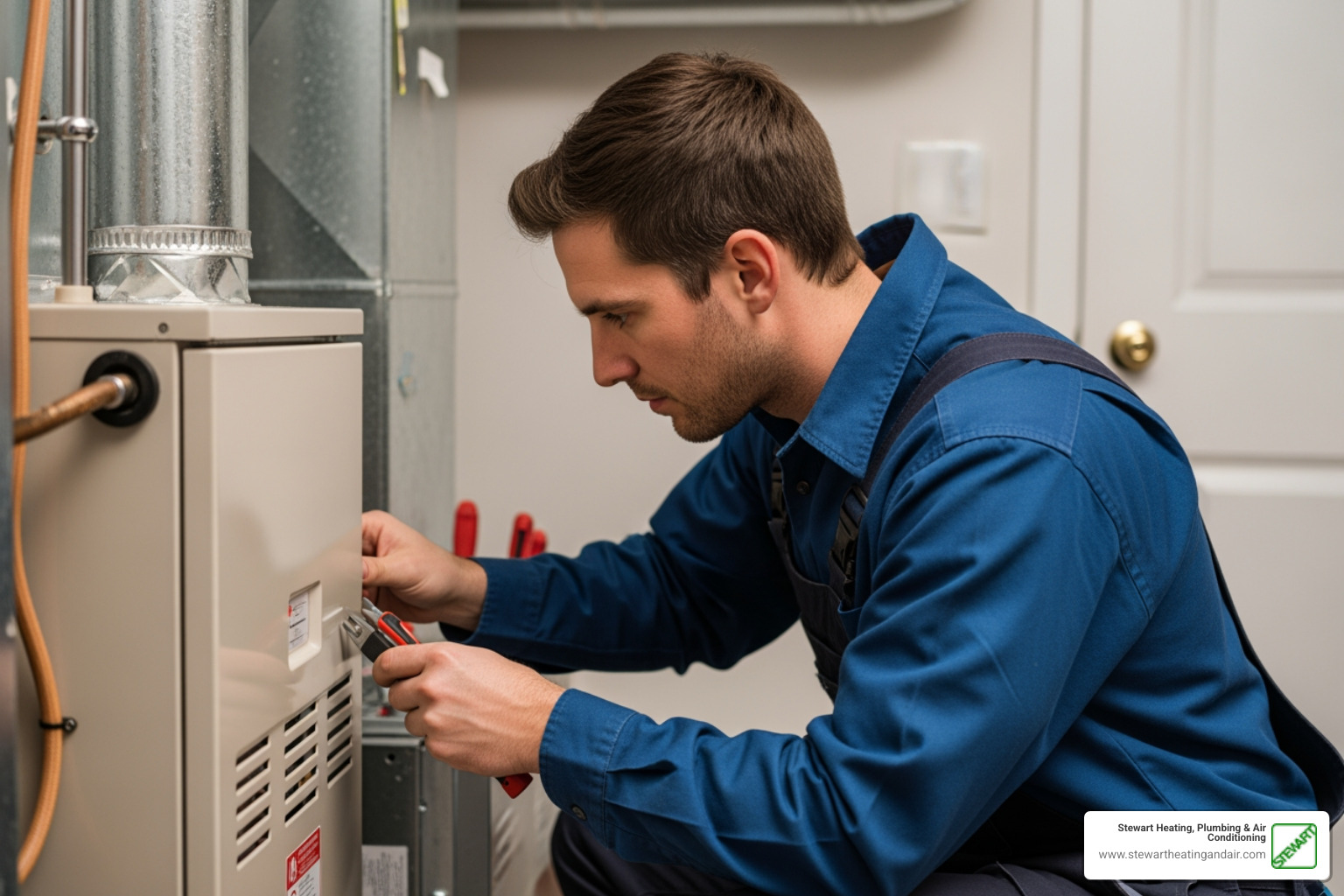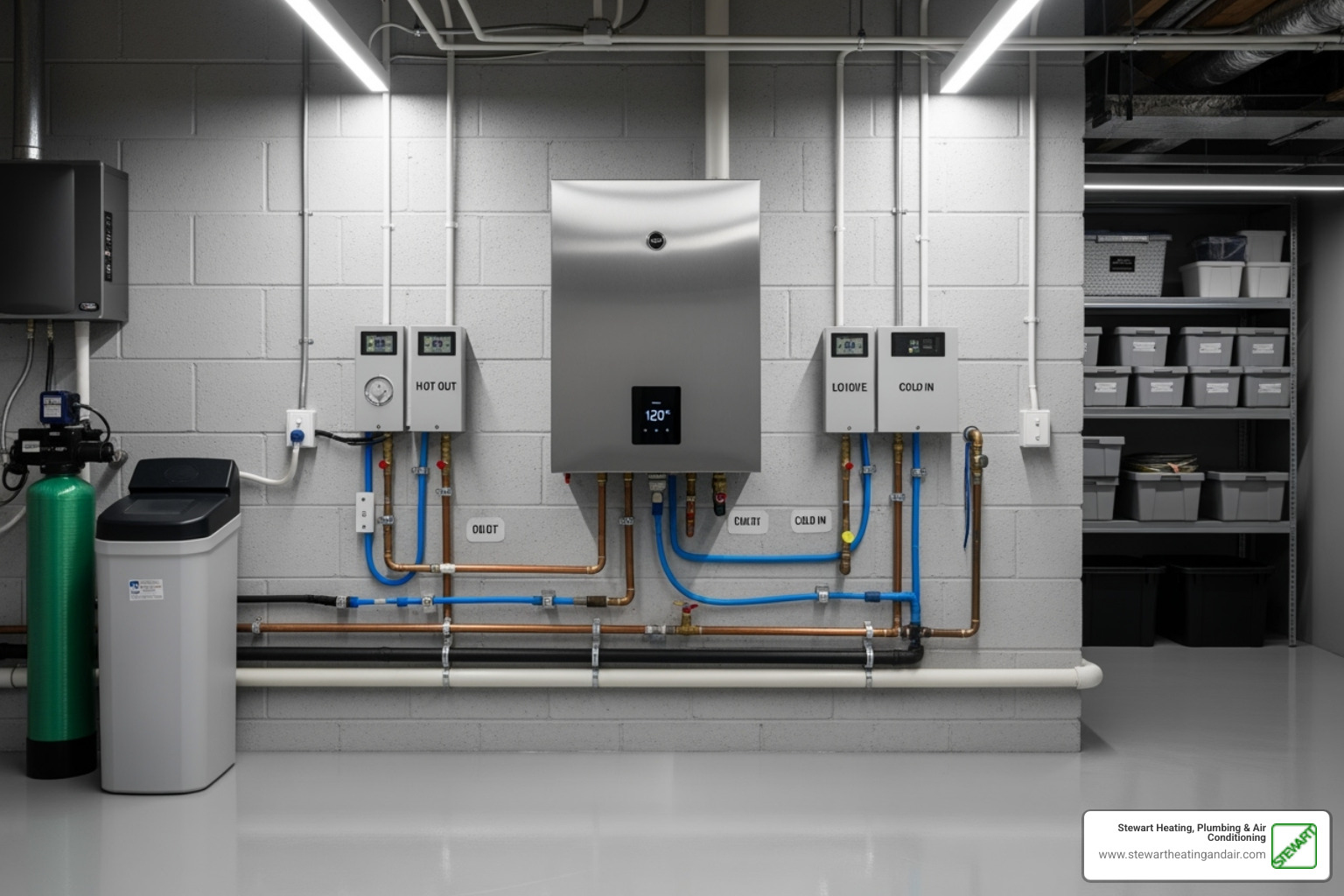
Why On-Demand Hot Water is Changing Home Comfort
A tankless water heater installation transforms your home by providing endless hot water on demand, saving both space and energy. Unlike traditional tanks that constantly heat stored water, tankless units heat water only when you need it.
Key installation requirements include:
- Professional installation for safety and code compliance
- Proper sizing based on your home's flow rate and temperature needs
- Gas line upgrades, as tankless units use more BTUs than tank heaters
- Electrical requirements, with electric units needing dedicated 240V circuits
- Venting systems for gas units, which require direct venting to the exterior
- Permits for most installations
According to the U.S. Department of Energy, water heating accounts for about 20 percent of a home's energy use. Tankless units can be up to 52% more efficient than standard 50-gallon tank heaters and last 20+ years, compared to 10-15 years for traditional tanks.
The installation process is complex. As one expert noted: "Improper gas lines can result in explosions, improper gas venting can result in dangerous carbon dioxide leaking into your home, and poorly installed water lines can leave you with harmful water damage." Professional installation is crucial to ensure your system meets local codes, operates safely, and maintains its warranty.
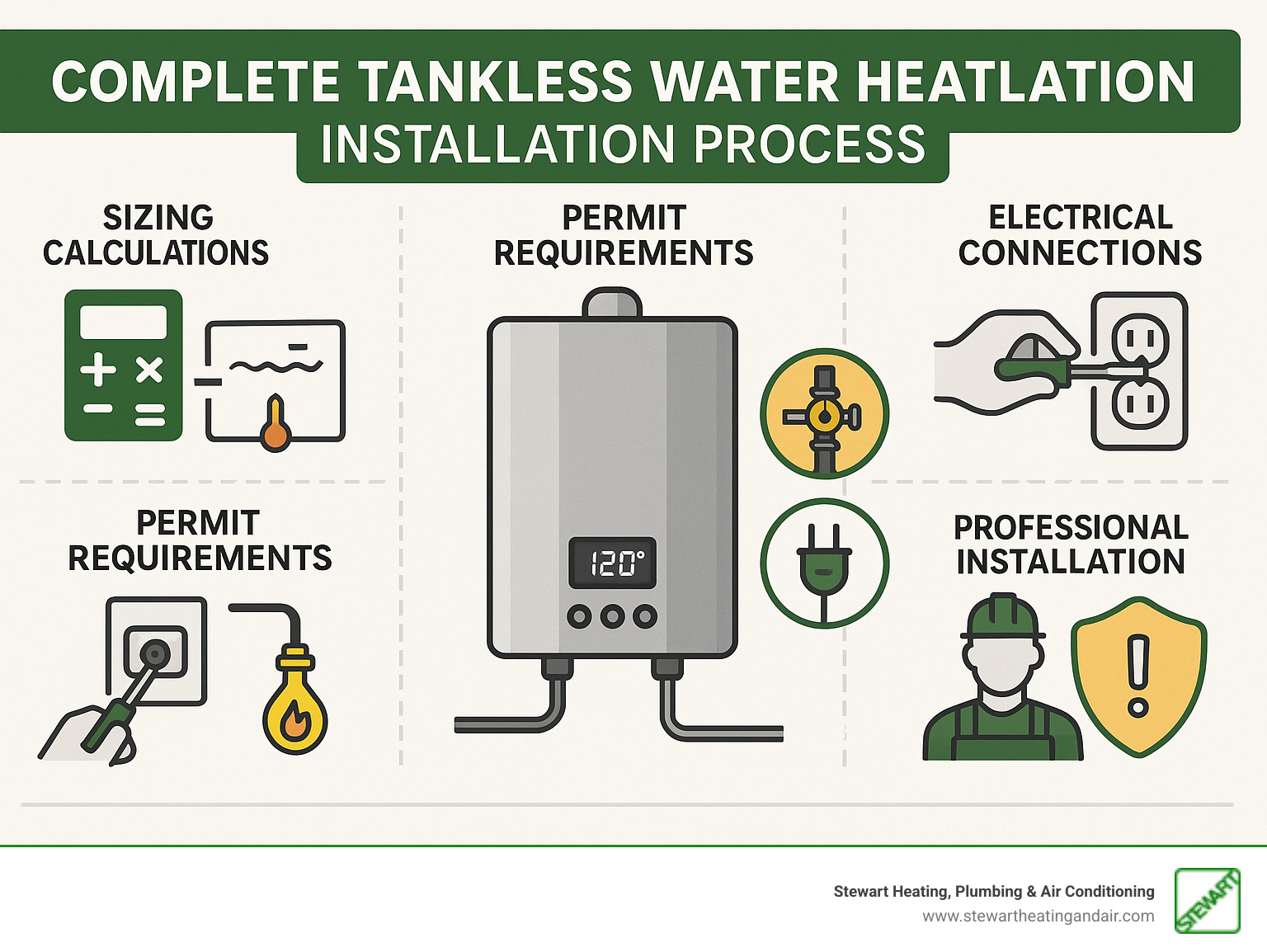
Before You Install: Sizing, Types, and Costs
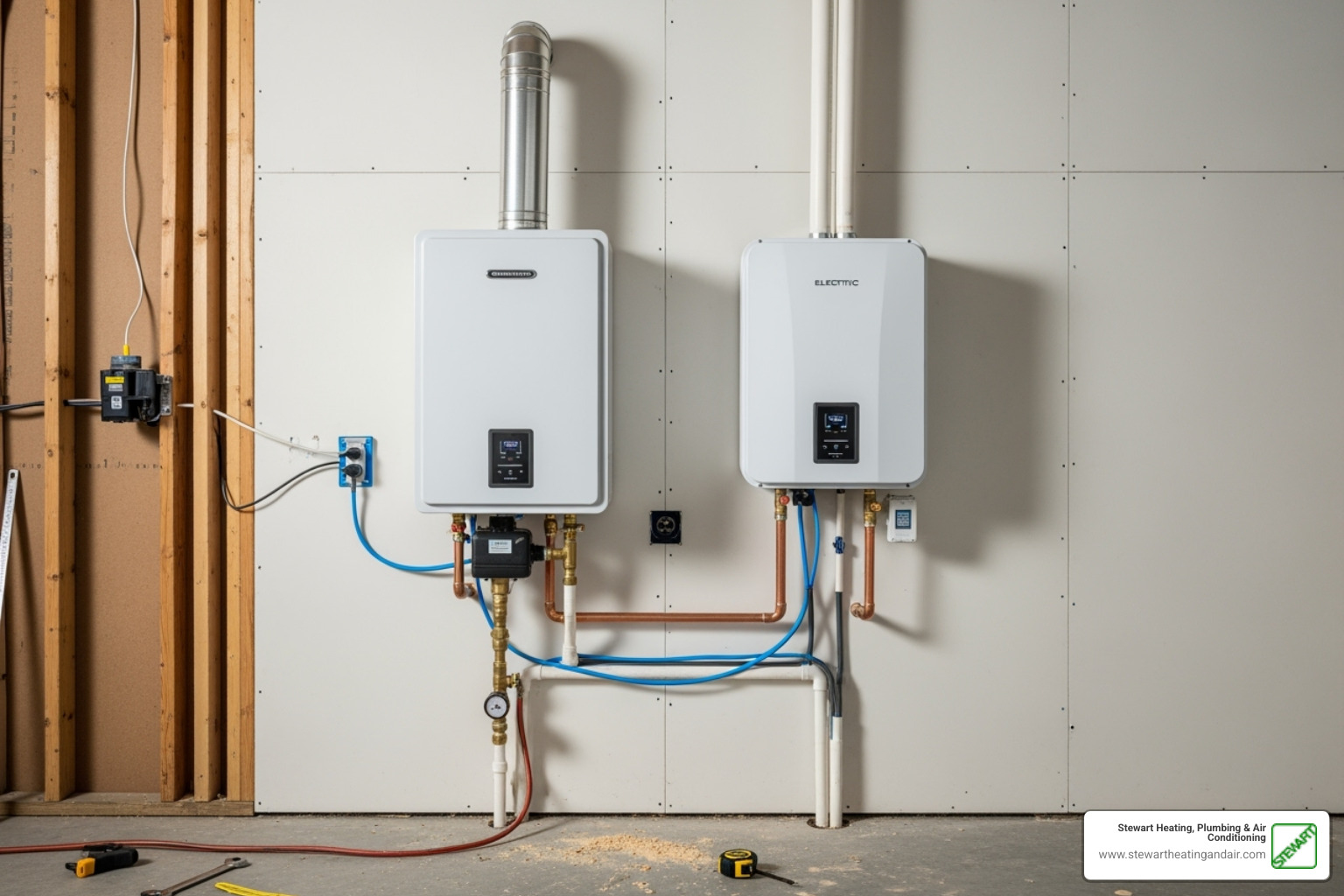
Before your tankless water heater installation, you'll need to make some important decisions. Getting the foundation right—from sizing to fuel type—ensures you'll enjoy endless hot water for decades.
Sizing Your Unit: BTU and Flow Rate Explained
Proper sizing is critical to avoid lukewarm showers during peak usage. Two key factors determine the right size for your tankless water heater installation:
Flow rate, measured in gallons per minute (GPM), is the total amount of hot water you need at any one time. A typical shower uses about 2.5 GPM, while a dishwasher might need 1.5 GPM. We help you calculate your peak demand.
Temperature rise is the difference between the incoming cold water temperature and your desired hot water output (usually 120°F). In Northern California, winter water can be 55°F, requiring a 65-degree temperature rise. A larger rise requires a more powerful unit to maintain the desired flow rate.
This is why BTU input is crucial for gas units. A tankless heater needs 90,000 to 130,000 BTUs per hour to heat water instantly, far more than the 40,000 BTUs of a traditional tank. Climate and household demand also significantly impact sizing. The most common mistake is choosing a unit that's too small; a professional assessment ensures your heater matches your specific needs.
More info about our tankless water heaters in Danville, CA
Choosing Your Fuel: Gas vs. Electric
Choosing between gas and electric power is a key decision for your tankless water heater installation.
| Feature | Gas Tankless Water Heater | Electric Tankless Water Heater |
|---|---|---|
| Installation Requirements | Requires gas line (often an upgrade), venting system, and an electrical outlet. More complex. | Requires dedicated high-amperage electrical circuits (often a panel upgrade). Simpler plumbing, no venting. |
| Operating Cost | Generally lower, depending on local utility prices. | Generally higher, due to the cost of electricity per BTU. |
| Pros | High hot water output, lower operating costs. | No gas lines or venting, compact, no CO risk. |
| Cons | Complex installation, requires proper venting for safety. | High electrical demand, higher operating costs, no hot water during a power outage. |
Gas heaters are powerful and ideal for busy households but require complex installation with careful gas line work and venting. Electric heaters are simpler to install from a plumbing perspective but have significant electrical needs that may require a panel upgrade.
For maximum efficiency, consider condensing technology. Condensing units capture extra heat from exhaust gases, achieving higher efficiency ratings. The UEF rating (Uniform Energy Factor) measures this efficiency; a higher UEF means lower operating costs. Condensing units can have a UEF of 0.96 or more, while non-condensing units are typically in the 0.80-0.85 range.
More info about our tankless water heaters in Walnut Creek, CA
Budgeting for Your Upgrade: Unit and Installation Costs
Understanding the factors that influence the cost of a tankless water heater installation helps you budget effectively.
The unit's price depends on its fuel type, size, brand, and efficiency rating. Condensing technology costs more upfront but delivers long-term savings.
Installation complexity is the other major cost factor:
- Gas line upgrades: Tankless units require more fuel than tanks, often necessitating a larger gas line (e.g., from 1/2-inch to 3/4-inch).
- Electrical panel upgrades: Whole-house electric units need multiple high-amperage circuits, which may require a panel upgrade to handle the load.
- Venting materials: Gas units require specific venting. Condensing units can often use PVC, while non-condensing models need more expensive stainless steel.
- Permit fees: Most municipalities require permits to ensure the installation meets safety codes.
The accessibility of the installation location and whether you're switching fuel types also affect the final cost. While the initial investment is higher than for a tank heater, the energy savings and longer lifespan make it a financially sound upgrade.
More info about our tankless water heaters in Lafayette, CA
The Professional Tankless Water Heater Installation Process
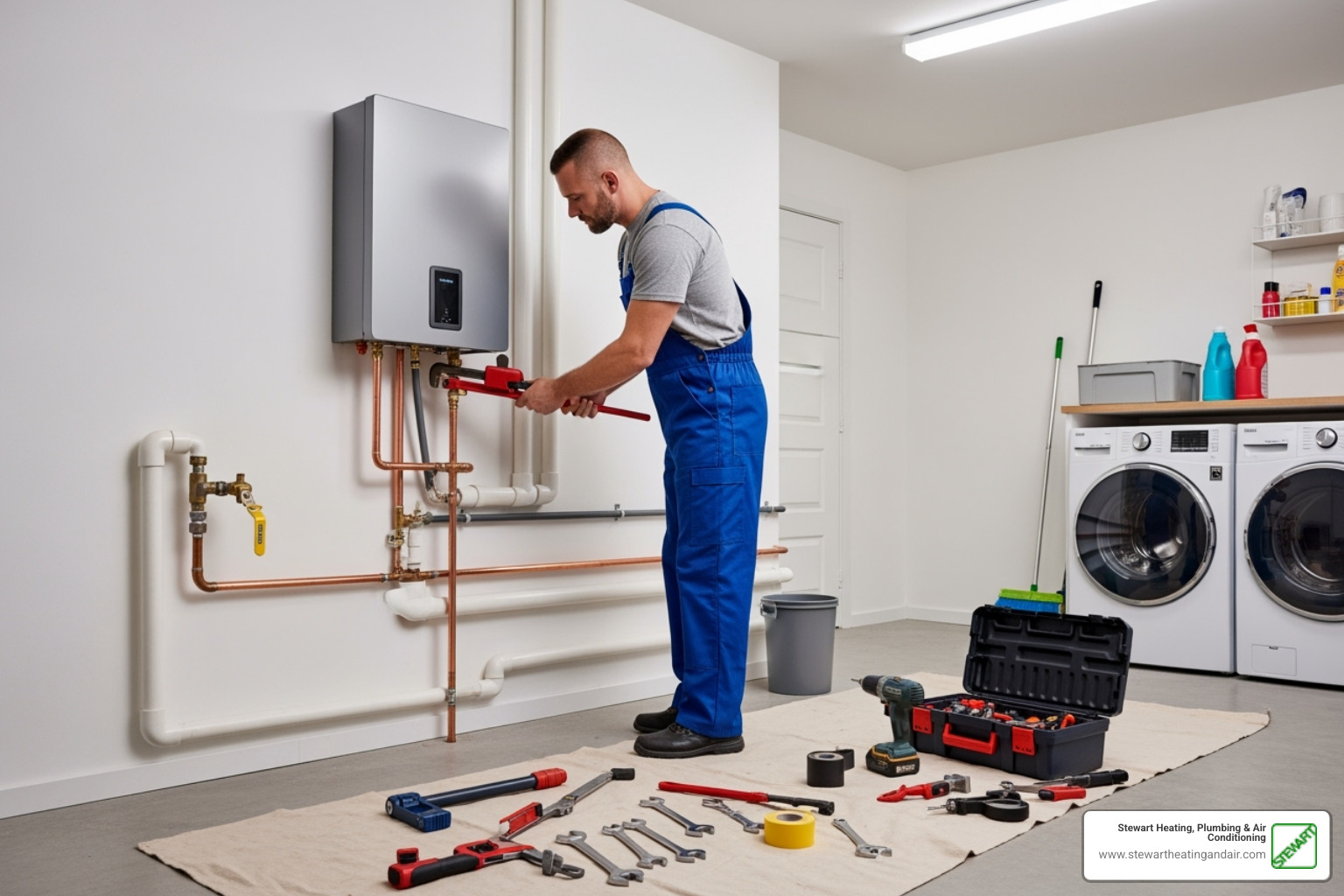
Once you've selected your unit, the professional tankless water heater installation can begin. The process requires every component—gas, electric, venting, and water lines—to work in perfect harmony for safe and efficient operation. This section outlines the key steps for a professional installation.
Pre-Installation: Permits and Site Preparation
A professional installation begins long before any tools come out.
- Permits and Codes: We handle obtaining permits and ensure the entire installation complies with local building codes in Contra Costa County. This is a critical safety step that also protects you during a future home sale or insurance claim.
- Site Selection: We help you choose the best location for your new unit. While compact, it needs proper clearance for ventilation and service access, plus proximity to utility lines.
- Old Heater Removal: We safely disconnect and remove your old tank heater, including shutting off all utilities and draining the tank.
- Water Pressure Check: We check your home's water pressure. If it's above 80 psi, we'll install a pressure reducing valve to protect your new unit from damage.
Key Steps for Gas Tankless Water Heater Installation
A gas tankless water heater installation is a technical process that demands expertise.
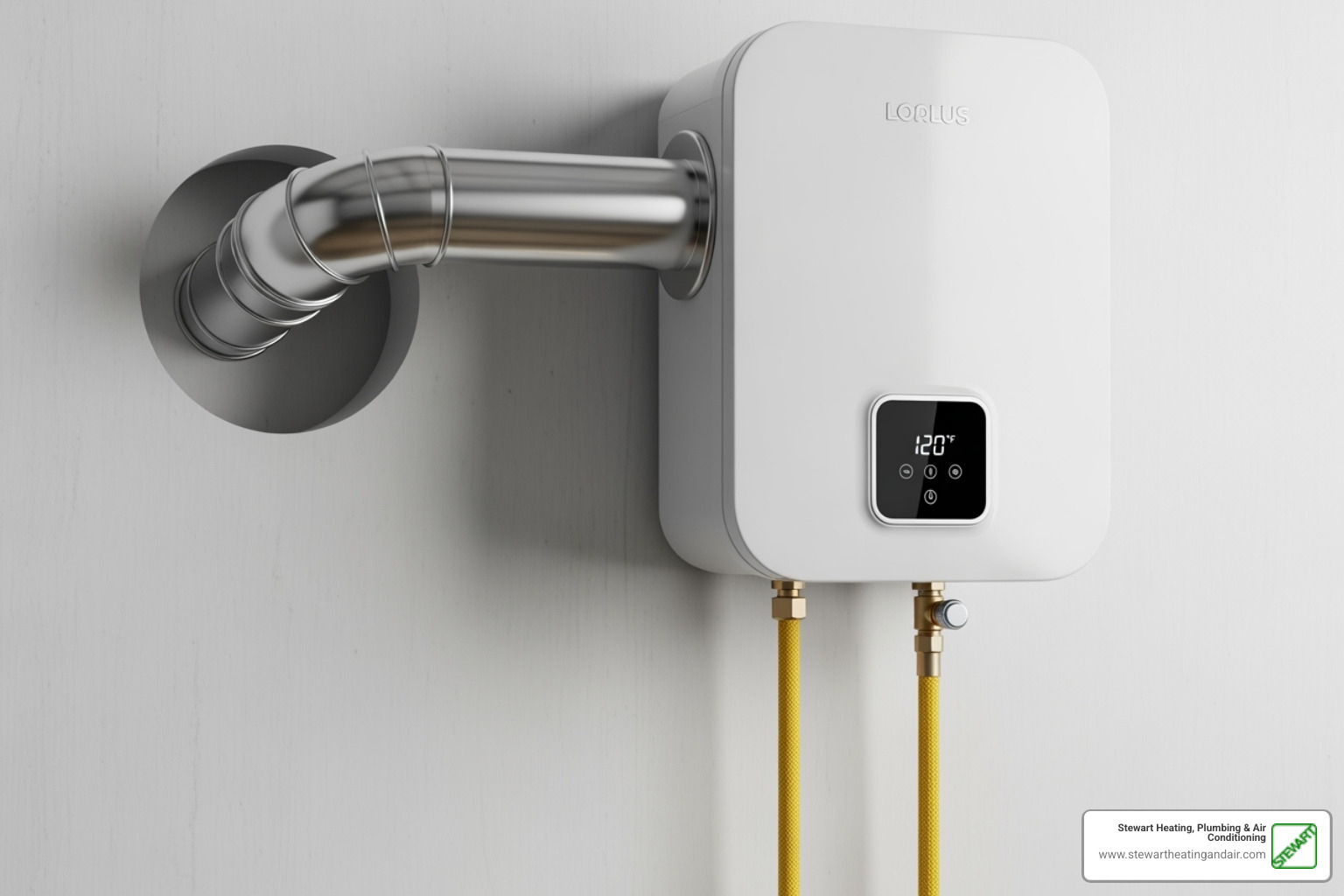
- Mounting: The unit is securely mounted to a wall, adhering to manufacturer-specified clearances for safety and airflow.
- Gas Line Sizing: Because tankless units use significantly more BTUs (90k-130k) than tanks (30k-40k), we often need to upgrade the gas line to a larger diameter. A sediment trap is also installed to protect the unit from debris.
- Water Connections: We make secure water line connections using high-quality materials and install isolation valves to simplify future maintenance.
- Venting: This is a critical safety step. Most units require a direct vent system that pulls air from and exhausts to the outdoors, as they cannot use existing chimneys. Power vent fans offer more installation flexibility. For high-efficiency condensing units, a condensate drain is installed to safely remove liquid byproduct.
More info about our tankless water heater installation in Concord, CA
Key Steps for Electric Tankless Water Heater Installation
While an electric tankless water heater installation avoids gas lines and venting, its electrical demands are significant.
- Mounting: The unit is securely mounted with proper clearances, similar to a gas model.
- Electrical Requirements: This is the main challenge. A whole-house electric unit requires substantial power, typically two or three dedicated 40-amp, 240-volt circuits. This high amperage need often requires an electrical panel upgrade to ensure your home's system can safely handle the load.
- Water Connections: We connect the water lines using high-quality materials and install isolation valves for future servicing.
- Application: Electric units are versatile and can be installed as whole-house systems or as smaller point-of-use heaters for individual fixtures.
More info about our tankless water heater installation in Martinez, CA
Why Professional Installation is Non-Negotiable
While the DIY spirit is admirable, a tankless water heater installation is a project best left to professionals. It involves complex gas, electrical, and plumbing work where mistakes can lead to costly and dangerous outcomes. This section details the risks of DIY and the benefits of hiring a qualified expert.
The Dangers of DIY: Safety and Code Violations
An improper tankless water heater installation poses serious risks:
- Gas Leaks and Fire: Incorrect gas line connections can lead to leaks, creating a severe risk of fire or explosion.
- Carbon Monoxide Poisoning: Improper venting of a gas unit can allow this deadly, odorless gas to enter your home.
- Electrical Hazards: Electric units involve high-amperage circuits that can cause fires or severe electrical shock if wired incorrectly.
- Water Damage: Poorly sealed plumbing connections can lead to major leaks and costly water damage.
- Voiding Warranties: Most manufacturers require professional installation to honor their warranty, leaving you unprotected if issues arise.
- Insurance and Code Violations: A DIY installation can be denied by homeowner's insurance and will likely violate local building codes, leading to fines and problems when selling your home.
Long-Term Care: Post-Installation Maintenance
After your tankless water heater installation, regular maintenance is key to longevity and efficiency, especially given the hard water in Contra Costa County.
- Annual Descaling: The most critical task is flushing the system annually to remove mineral buildup (scale) from the heat exchanger. This prevents efficiency loss and extends the unit's life.
- Inlet Filter Cleaning: The inlet water filter should be cleaned periodically to remove sediment and maintain proper water flow.
- Professional Servicing: An annual professional check-up ensures all components are working correctly, safety systems are functional, and potential issues are caught early.
These steps protect your investment and guarantee reliable hot water for years.
More info about our tankless water heater repair in Pleasant Hill, CA
Frequently Asked Questions about Tankless Installation
Here are answers to the most common questions we hear about tankless water heater installation.
How long does a tankless water heater installation take?
A professional tankless water heater installation typically takes 4 to 8 hours. A straightforward replacement of a tank heater can be on the lower end of that range. However, the timeline can extend if the project requires significant upgrades, such as running a new gas line, installing complex venting, or upgrading an electrical panel. The accessibility of the installation location also plays a role.
Can a tankless water heater be installed in the same spot as my old tank?
Usually, yes. Because tankless units are compact and wall-mounted, they can often be installed in the same location as a bulky old tank, freeing up floor space. However, the location must meet specific requirements. Gas units need proper clearances for airflow and a direct path for the new venting system (they cannot use an old chimney). Electric units require close access to adequate electrical service. We will assess your space to determine the safest and most efficient location.
Do I need more than one tankless water heater?
For most homes, a single, properly-sized whole-house tankless unit is sufficient to meet demand. The key is correct sizing based on your family's peak hot water usage, which we help determine. However, very large homes with multiple bathrooms and high simultaneous demand may benefit from two units working in tandem. Additionally, a small point-of-use electric unit can be a great solution for a distant bathroom or kitchen to provide instant hot water and reduce water waste.
Upgrade to Endless Hot Water in Contra Costa County
Upgrading to a tankless water heater is a smart investment in your home's comfort and efficiency. While the process requires careful planning around sizing, permits, and utility requirements, the payoff is significant. You'll enjoy endless hot water, lower energy bills, and a longer system lifespan of 20+ years, all while reclaiming valuable space.
Professional tankless water heater installation is essential. The complexities of gas lines, high-voltage electricity, and proper venting demand the expertise of a qualified technician to ensure safety, code compliance, and warranty protection.
At Stewart Heating, Plumbing & Air Conditioning, we pride ourselves on getting the job done right the first time. Our experienced team has served homeowners throughout Contra Costa County, including Pittsburg, Walnut Creek, Danville, and Concord, handling every detail from permits to final testing. Our commitment to quality and customer satisfaction is why so many of our clients refer us to their friends and family.
Ready to enjoy the benefits of endless hot water? Let's make it happen.
Contact us today for your tankless water heater installation in Concord, CA

